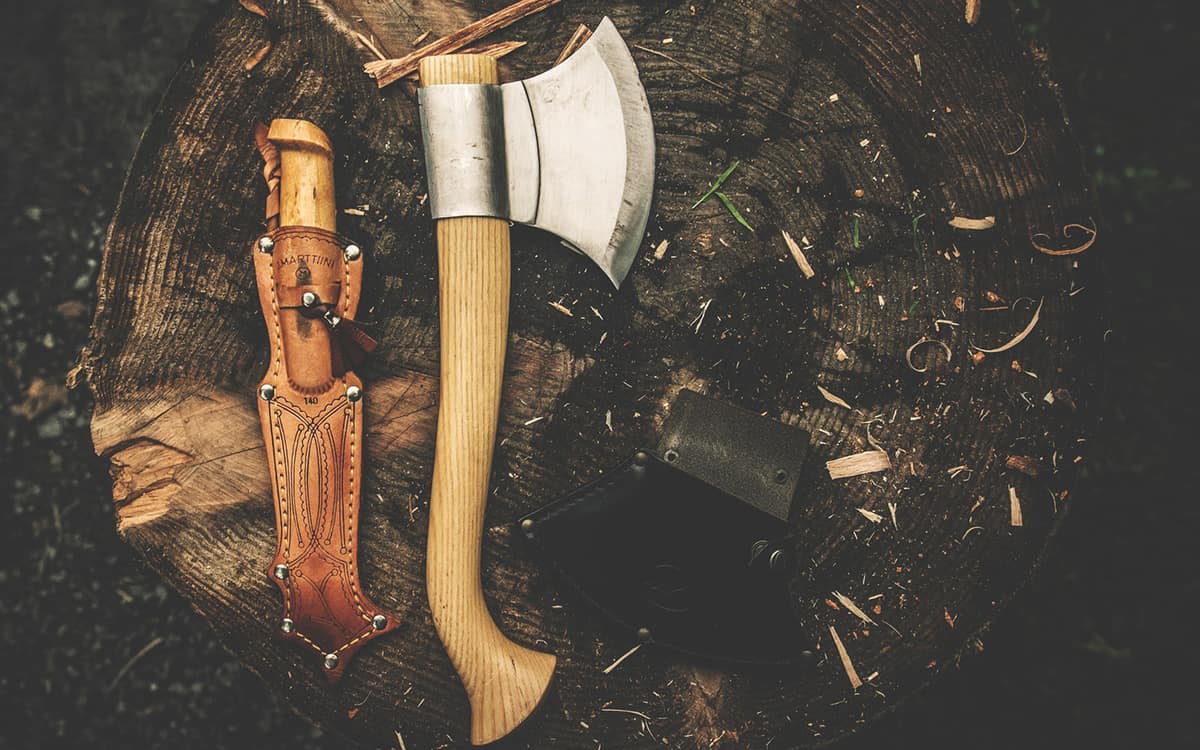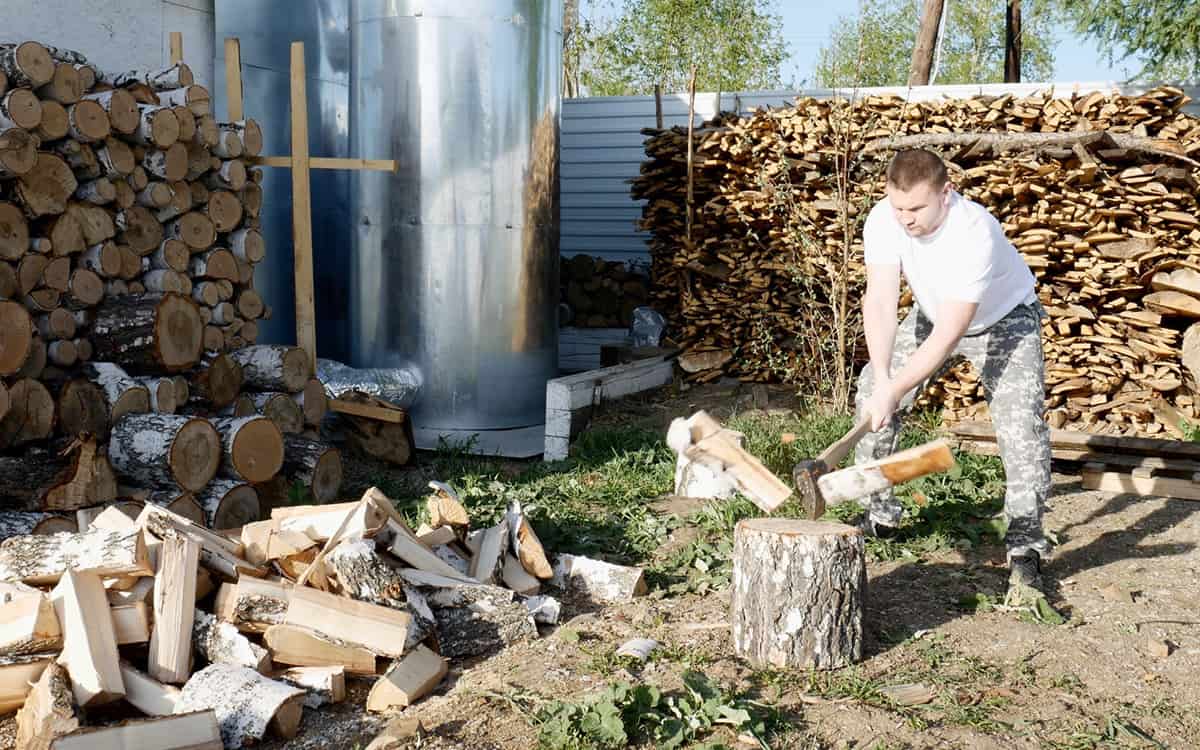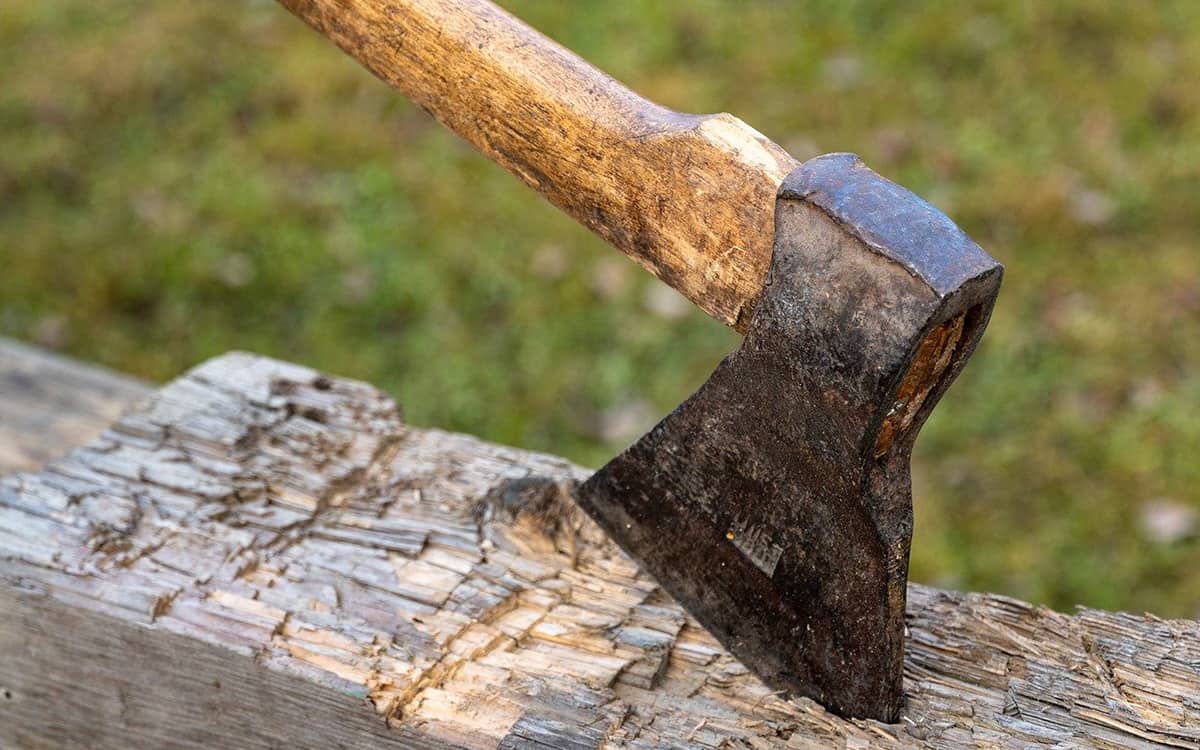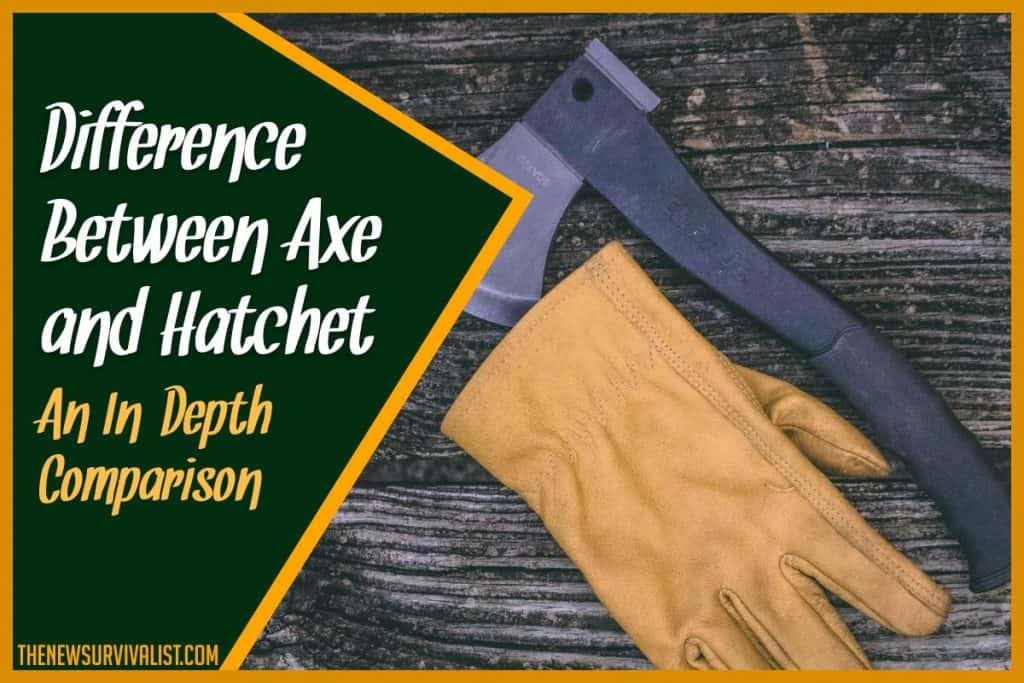Time is a valuable resource for preppers. Using the right tool can exponentially increase productivity and save time. When SHTF, proper time management is an important variable to consider for increasing survivability. Using the proper tool for the job, to finish it efficiently is a must.
There are two tools, that have a long history which is essential for preppers to have; the axe and the hatchet. Their main differences lie in their design, size, weight, appearance, and purpose. Axes are considerably heavier and larger than hatchets. They’re designed for felling trees and splitting firewood, while hatchets are better suited for lighter tasks such as chopping small tree branches or carving wood.
Knowledge about their differences means knowing which tool is appropriate to bring or use for a specific setting, or context. In a survival setting, efficiency is everything. Being efficient leads to the conservation of time and energy which can then be spent on other matters that increase one’s survival rate.
Parts of a Hatchet and an Axe
- Steel Head – a metal that has a blade and sits on top of a wooden handle. Its design and thickness will differ between a hatchet and an axe.
- Handle – commonly made of wood, and can be long or short. Hatchets sometimes have a metal handle, but axes will always have a wooden handle to better absorb vibrations.
Hatchet vs. Axe
Hatchet

A hatchet is a one-handed chopping and striking tool that is often mislabeled as a one-handed axe. Its steel head is thinner, and the blade is usually wider. There are two different impact surfaces, the first being a sharpened blade for cutting and chopping wood, and at the opposite side is a hammer for striking.
The handle is short and can be made from wood or metal. Its short handle makes it possible to be used with one hand, in tight places, and locations with an uneven footing. Due to its compact size, the hatchet can be used on tasks as an alternative to a pocket knife. It is generally used to cut branches, and to shape and chop wood. It can also be used to hammer down nails or spikes if needed.
Some hatchets even have a notch in their steel head for pulling out nails. Due to its smaller dimension and lighter head, it can easily be used as a throwing weapon.
- Head design: Thinner steel head with 2 sides; a sharp edge and a hammer. Some designs include a notch for removing nails.
- Handle length: Short and lighter. Wood or metal.
- Uses: Cutting branches, shaping, carving, or chopping small wood, and striking objects.
Axe

An axe is a two-handed chopping tool with a steel head sitting on top of a long wooden handle. The steel head is fashioned like a wedge to easily split large wood or cut down a tree. Unlike the hatchet, the backside of an axe is most often flat and is called a poll.
There are several variations to the axe design. It can either have a single blade, two sharpened sides, or a sharply pointed back. There are even variations that are one-handed with a short handle. This is probably one of the reasons why a hatchet is often mislabeled as a small axe.
When used for splitting logs the axe’s long handle functions like a lever, with the user’s shoulders, elbows, or hands as the fulcrum. This increases the power behind it without straining too much, making it easier to chop firewood or a fallen timber into pieces.
- Head design: The steel head is thicker, wedge-shaped, with one sharpened side and a flat backside.
- Handle length: Generally long, some variations have small handles. Only made of wood.
- Uses: Chopping wood, cutting down a tree, and cutting timber into smaller parts.
How to Use a Hatchet?
Hatchets can be used to chop small wood, kindling, or branches. There are no special ways to use it. However, keep in mind that the hatchet has a thinner head and will not be suitable for splitting wood. Instead, it is used for trimming and shaping wood, and other work that requires a pocket knife.
How to Use an Axe?

Unlike a hatchet, using an axe needs proper posture and technique to be used safely and effectively. When splitting logs with an axe, or any bladed tools like a kukri, always use a chopping block. This piece of wood catches the axe head and prevents it from hitting the dirt and rocks that can potentially damage the tool.
To split wood, place a piece of log vertically on the chopping block. It is easier to split it when it is placed in an upright position where the grains run vertically. Chopping from the sides is harder due to the position of the wood grain creating more resistance.
Start measuring and positioning yourself to be able to hit the log with the steel head. Always take advantage of the axe’s long handle and use it as a lever. To properly use an axe:
- Hold the end of the axe with your non-dominant hand.
- Hold the neck of the axe loosely, just below the steel head with your dominant hand.
- There are two ways to swing the axe: from the side, or over-head by lifting the axe above and behind your head.
- Now swing the axe towards the log, while letting the handle slide on your dominant hand.
- As the axe head comes down, your dominant hand will naturally slide and reach the end of the handle. Hold firmly with two hands at the end of the handle and apply additional force to increase the impact of the axe head.
Taking Care of Your Tools
In an SHTF or a survival setting, you do not want to accidentally break your tool by misusing it or let it get damaged through neglect. Preppers should stock-up on the proper materials needed for the maintenance and protection of their tool
Essential Supplies for Hatchet and Axe Maintenance
- Any oil
- Boiled linseed oil
- Wire wool
- Different grits of whetstone
- Axe mask
- Leather protectant
Steel Head

The majority of hatchet and axe heads are made from steel, meaning it will rust over time when kept damp. To protect the head from moisture, apply a coat of oil all over it, and remove the excess with a cloth before letting it dry. If there are rusty parts, use a ball of wire wool to scour them and then apply oil.
Keeping the axe sharp at all times is also important. Depending on the condition of the blade, an appropriate whetstone should be used to fix it. For example, a chipped blade will need a rougher grit to smoothen it back.
The leather cover of a hatchet or an axe blade is called a mask. It protects the owner from accidental injury. This should be taken care of by not letting it warp or dry out. A leather protectant should be used from time to time to preserve its quality.
Handle

For the metal handle as seen in some hatches, the oil should be applied on all exposed metal parts. Similar to using oil on a steel head, this prevents rusting and protects the steel from weathering.
Wooden handles also need to be maintained using a coat of oil. The most recommended oil to use is boiled linseed oil. Do not use raw linseed oil as it doesn’t dry well, and leaves a sticky residue. Oiling the handle is important to keep the wood water-proof.
Despite their differences, a hatchet and an axe are two versatile tools that are extremely useful in an SHTF situation. Taking good care of your tools ensures they stay effective, useful, and reliable all the time.

